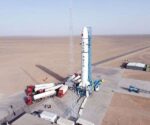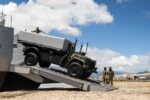The U.S. government is reportedly considering supplying Ukraine with surplus Bell AH-1Z Viper attack helicopters and UH-1Y Venom utility helicopters as part of future military aid packages. Both platforms are derived from the U.S. Marine Corps’ H-1 upgrade program and offer modern avionics, survivability enhancements, and NATO-standard interoperability—features that could significantly enhance Ukraine’s rotary-wing capabilities.
Background: The H-1 Program and Surplus Availability
The AH-1Z Viper and UH-1Y Venom are twin-engine rotorcraft developed by Bell Textron under the U.S. Marine Corps’ H-1 Upgrade Program initiated in the early 2000s. The program aimed to reduce logistics burden by achieving 85% parts commonality between the attack (Viper) and utility (Venom) variants while modernizing both platforms for 21st-century operations.
As of FY2022, the USMC has completed procurement of its planned fleet—160 AH-1Zs and 140 UH-1Ys—freeing up potential excess inventory for Foreign Military Sales (FMS) or Excess Defense Articles (EDA) transfers. In recent years, both types have been offered to allies such as the Czech Republic (which ordered four of each), Bahrain (12 AH-1Zs), and Slovakia (12 AH-1Zs via EDA).
AH-1Z Viper Capabilities: A Modernized Cobra
The AH-1Z “Viper” is a heavily upgraded derivative of the legacy AH-1W Super Cobra. Key features include:
- Four-blade composite rotor system with improved lift and vibration reduction
- Target Sight System (TSS) with FLIR for day/night targeting
- Helmet-mounted cueing system for pilot/gunner
- Integrated avionics suite compatible with Link 16 datalink
- Weapons options including AGM-114 Hellfire missiles, APKWS II laser-guided rockets (70 mm), AIM‑9 Sidewinders (air-to-air), Hydra unguided rockets, and a nose-mounted M197 20 mm cannon
The platform offers extended range (~425 km combat radius), high survivability through redundant systems and crashworthy components, as well as proven performance in expeditionary environments.
UH-1Y Venom Utility Role in High-Threat Environments
The UH‑1Y “Venom” is a multi-role utility helicopter designed to replace aging UH‑1N Hueys in USMC service. It retains tactical flexibility while incorporating survivability upgrades suitable for contested airspace:
- Twin General Electric T700-GE‑401C engines shared with the Viper
- Advanced glass cockpit with digital moving maps and mission planning tools
- Up to two door-mounted GAU‑17/A miniguns or GAU‑21 .50 cal machine guns
- Sling load capability (~3,600 kg external)
- Crew capacity up to two pilots + eight troops or medevac stretchers
- NVG-compatible cockpit and IR suppression systems
This makes it ideal for casualty evacuation (CASEVAC), troop transport under fire, resupply missions to frontline positions inaccessible by ground due to Russian artillery or drone threats.
Status of Potential Transfer to Ukraine
No official confirmation has been made regarding an imminent transfer of either helicopter type to Ukraine as of June 2024. However:
- The Pentagon has previously included rotary-wing platforms in aid packages—including Mi‑17s sourced from Afghanistan stock—and is actively exploring additional air mobility solutions.
- In April–May 2024 congressional testimony on Ukraine assistance oversight, DoD officials referenced “rotary-wing modernization options” being explored under USAI funding lines.
- Bell Textron has expressed willingness to support rapid fielding efforts via training pipelines already established with NATO users like Czechia.
- A key hurdle remains training time (~6 months minimum per crew) as well as sustainment infrastructure—though this could be mitigated via regional hubs in Poland or Romania.
Battlespace Impact if Deployed in Ukraine
If transferred in meaningful numbers (>6–8 aircraft per type), these helicopters would offer several advantages over Soviet-era Mi‑24/8/17 currently used by Ukrainian forces:
Tactical Agility & Survivability
The smaller radar cross-section of both types compared to Mi-series aircraft improves survivability against Russian MANPADS like Igla-S or Verba. Their digital avionics allow faster target acquisition cycles when paired with Western ISR feeds or drone spotting data.
NATO Interoperability & Western Munitions Integration
Unlike Mi-series platforms restricted by Warsaw Pact-era munitions stockpile issues or compatibility gaps with NATO C4ISR networks, both H‑1 variants are designed from inception for seamless integration into NATO kill chains using Link‑16 datalinks and precision-guided munitions like APKWS II—a capability already fielded by Ukrainian Su‑25s adapted with Western pods.
Sustainment Considerations & Training Pipelines
Sustainment remains a critical factor; however, Bell’s existing European footprint through Czechia’s operation of both types could serve as a logistical bridgehead. Additionally:
– Modular design eases maintenance burden
– Shared engine/avionics base simplifies spare part logistics
– Existing simulators at USMC bases could be leveraged for Ukrainian pilot training
These factors suggest that while not plug-and-play solutions like FPV drones or MRAPs already flooding Ukrainian units within weeks of delivery—the H‑1 family could become viable mid-term force multipliers if phased properly.
Conclusion: Strategic Value Beyond Numbers
The possible inclusion of Bell’s AH‑1Z Vipers and UH‑1Y Venoms into future U.S.-Ukraine military aid would mark a significant shift toward deeper NATO-standardization within Ukraine’s rotary-wing aviation sector. While challenges remain—from pilot training timelines to depot-level sustainment—their introduction would provide Kyiv not only enhanced battlefield mobility but also critical experience operating modern Western rotorcraft under combat conditions—a stepping stone toward long-term force transformation.
If confirmed later this year under USAI or FMF funding channels—or even via third-party donations from current operators—the move would signal Washington’s intent to further deepen interoperability while providing Kyiv tools better suited for combined arms maneuver warfare against entrenched Russian positions across eastern Ukraine.










